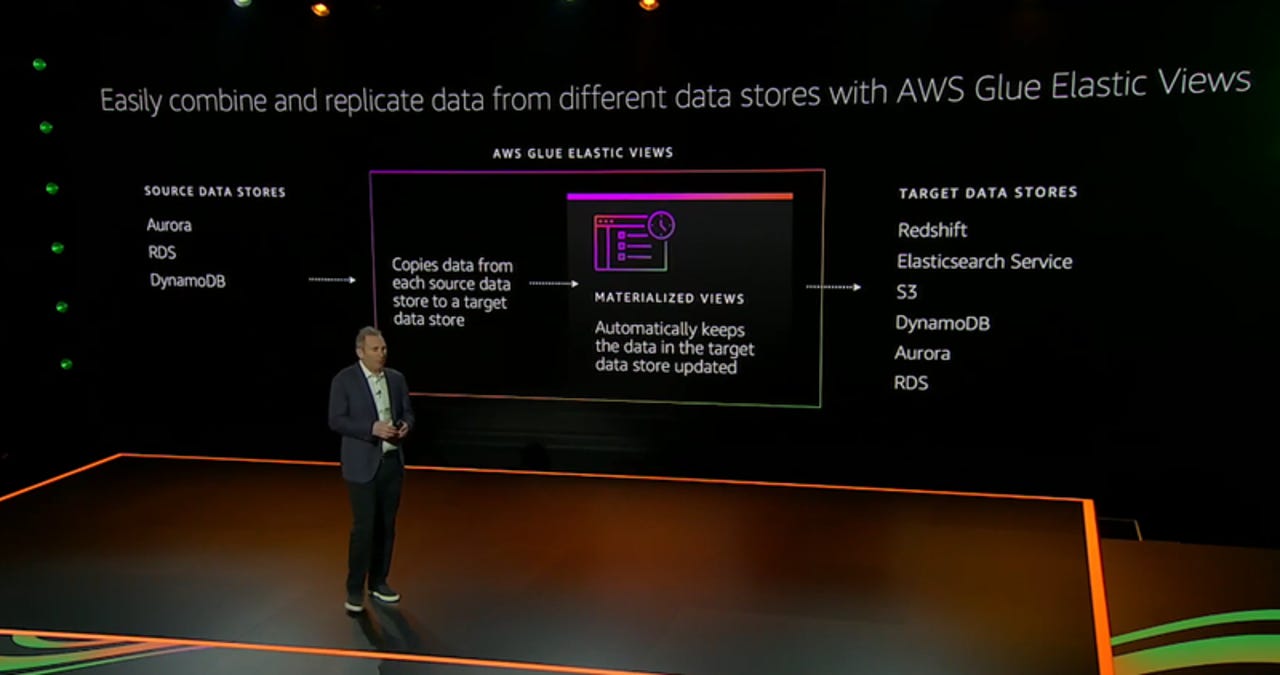AWS eyes more database workloads via migration, data movement services


AWS re:Invent
Amazon Web Services is betting that data movement between your storage, database and analytics workflows is going to be the secret sauce for gaining more workloads on legacy players.
As part of a broad storage and database updates, AWS rolled out AWS Glue Elastic Views. The service manages data stores and automatically keeps them updated across databases and analytics. "To have the ability to move data from data store to datastore is transformational," said Jassy.
SEE: Managing the multicloud (ZDNet/TechRepublic special feature) | Download the free PDF version (TechRepublic)
In addition, AWS launched a series of database migration tools.
"People really want to move from proprietary databases. All databases are being reinvented," said Jassy. "If you have data in volumes in gigabytes or terabytes you can get away with a relational database. Once you get to petabytes and exabytes it's too complicated."
Jassy also said that analytics stores are also up for grabs to be simplified. "You want these purpose built analytics stores," said Jassy.
Add it up and AWS Jassy sees purpose-built databases and free movement of data as a weapon vs incumbents like Oracle as well as rivals like Microsoft. The end game here is fairly clear. The more database and analytics workloads AWS takes the more it can use machine learning and model training to move up the value chain.
To that end, AWS launched SageMaker Data Wrangler, which preps data for machine learning from data stores on AWS or via third parties.
Storage and database moves included:
- AWS Glue Elastic Views to combine and replicate data across different data stores.
- Aurora Serverless v2, which allows you to scale to hundreds of thousands of transactions in fractions of a second, scale capacity and save on provisioning capacity. MySQL for serverless available now with Postgres on deck.
- Babelfish for Aurora PostgreSQL, which enables SQL Server applications on Aurora PostgreSQL. Babelfish for Aurora PostgreSQL understands SQL Server's proprietary dialect and communications protocol. AWS will open source Babelfish for PostgreSQL.
- Faster io2 Block Express to take on storage area networking with less latency. AWS is arguing that io2 Block Express will boost performance for SAP HANA, Microsoft SQL Server, Oracle, and Apache Cassandra workloads.